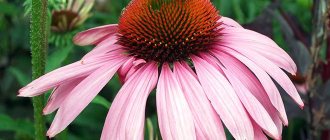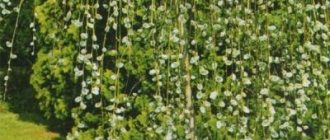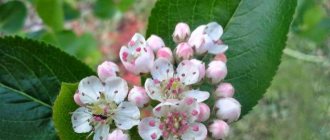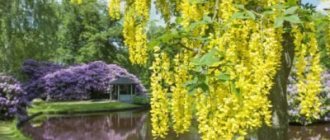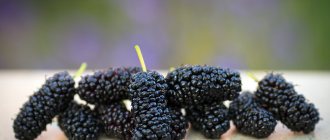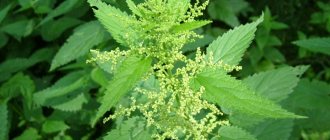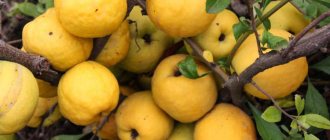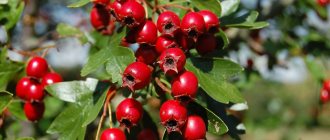Skumpia: variety of species and varieties
The shape of the scumpia resembles a tree or a powerful bush with unusual leaves that change color during the growing season.
During the flowering period, the tree is so charmingly beautiful, even the photo shows the lightness and transparency of the pink inflorescences, reminiscent of haze. Mackerel (Cotinus) goes by several names: sumac, leather tree, wig tree or yellowberry. The culture is classified by botanists as a separate genus of the Sumacaceae family. The distribution area is limited to the regions of North Africa and the southern regions of Europe, and is sometimes found in China.
Mackerel flowering
Wood is widely used in industrial production:
- Mackerel wood has an unusual yellow-green hue, due to which the tree is widely used for all kinds of crafts.
- Dyes for wool and silk fabric, dyeing yellow and orange, are obtained from skumpia.
- The leaves of the tree are used in tanning for leather.
The tree has become widespread for decorating gardens and parks. Unusual flowering brings aesthetic pleasure, this can be seen even in the photo - mackerel in bloom attracts the eye, so the plant is used in landscape design quite often. Sumac reaches a height of 4 meters, lives with good care for over 100 years.
Skumpia description
Prefers moderate soil moisture. The bluish, oval-shaped leaves are covered with a coating of wax; by autumn they change color to shades of purple and red.
Mackerel shrub, comes from the sumacaceae family. It was known about skumpia as a tree, according to historical sources, back in the ancient world. This long historical trail has given the plant several names.
The list is quite long: morocco leaf, leatherwood, yellowwood, fiset, alizarin, smoky wood. Mackerel is also called wig bush, Venetian sumac.
The tanning plant contains a dye - fisegine, orange and red. This dye is used for dyeing fabric and leather products.
In tanning leather, the leaves of the plant are used. Mackerel has found its rightful place in gardens for its decorative value; it grows in one place for an average of 80 years.
Main species representing the culture
- Mackerel leather green - tall shrub with green leaves. The high resistance of the species to unfavorable conditions, including severe frost, makes growing tannery mackerel simple and accessible even to novice gardeners. The fruits of this type of mackerel are green in color and appear on the bushes in early autumn. The most famous variety of leather mackerel is “Young Lady”. Its leaves remain green throughout the growing season. The inflorescences change color from green to pink.
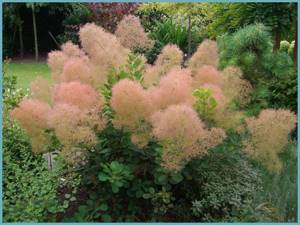
Green tanned skumpia - Mackerel red – distinguished by bright red leaves and a very decorative shape. But it is quite difficult to preserve this type of wig tree in the conditions of the Moscow region. The fact is that red mackerel does not tolerate low temperatures. Even with the installation of additional shelters, the plant freezes and dies in winter. Common varieties of red-leaved mackerel are: Royal Parple, purple mackerel, Flame.

Mackerel red - Skumpia koggiria - a natural variety with unusually shaped leaves, painted in bright yellow tones. Unfortunately, it is not frost-resistant and freezes easily even in slight frosts.
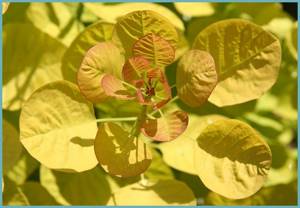
Skumpia koggiria
7sotok.by
Skumpia is a beautiful and very unusual deciduous shrub or tree, up to 8 meters high. It is a prominent representative of the Sumakhov (Anacardiyev) family, widely distributed in Russia, Ukraine, the Caucasus, and Mediterranean countries. The plant has become very popular in landscape design for its unpretentiousness and exotic appearance. Mackerel can often be found as a hedge, but most often this spectacular shrub is grown as a free-standing plant.
The people also call the skumpia “yellow tree”, “wig tree” and “pink cloud”. The life expectancy of the shrub is very long and can reach 100 years. Depending on the species, mackerel may differ in bush height, leaf color and frost resistance.
Planting mackerel in open ground.
Mackerel is absolutely not a capricious plant; it can be planted in open ground regardless of the season - spring, summer, autumn. However, it is worth considering that the shrub must have time to take root well before the onset of severe cold. For these reasons, it would be better to plant at the beginning of the year, especially if winters promise to be harsh.
There are no special requirements for the soil; slightly alkaline soil is best suited. The main thing is to avoid contact of the root system with groundwater. In its natural environment, mackerel often grows on gravelly slopes and limestone. In cultivation, gardeners often use it to stabilize soil on steep slopes. Thanks to its powerful spreading root system, mackerel copes with this task perfectly.
When choosing a place for planting, you must remember that mackerel loves well-lit areas. In the shade, the plant develops very poorly, looks sickly, and loses its decorative qualities. It is best to plant mackerel at least a meter away from other shrubs and trees so that it is not shaded by them. This is the most optimal distance also based on the reasoning that the mackerel bush grows quite quickly, and soon its crown will reach one and a half meters in diameter. By maintaining the correct distance between plants, it will be possible to avoid problems of close and irregular proximity.
Mackerel is rich in essential oils, which are not at all to the liking of plants such as maple and rowan. Neighboring them, the mackerel will gradually “oppress” them, weakening the vegetation system of even mature and large trees. But this does not mean at all that you will have to give up such a chic shrub; it will be enough to maintain a “safe” distance between conflicting plants (at least one meter).
Care.
Mackerel is rarely affected by any diseases, and is also practically not susceptible to attacks by parasites. Its greatest and, perhaps, only enemies are strong winds and waterlogged soils. When choosing a permanent place in the garden for skumpia, you should first of all pay attention to its ventilation, illumination and the level of groundwater flow in relation to the surface.
During the first time after planting, watering should be regular and quite abundant. In the future it should be reduced. Mackerel is a drought-resistant plant and for it, an excess of moisture is a more dangerous factor than its lack. As a way of caring for the shrub, you can note its periodic pruning. Precisely periodic, not regular. Pruning of branches is carried out in early spring in order to form the crown; it should not be more than once every two years. A more frequent procedure depletes the bush, which can lead to its death.
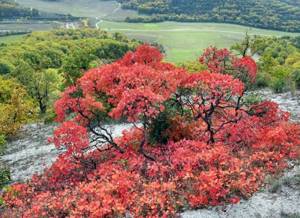
Reproduction of Skumpia.
Under natural conditions, the shrub successfully reproduces without outside help - by seeds. The culture uses three methods of propagating mackerel - by seeds, cuttings and rooting of layering.
Propagation of mackerel by seeds does not require preliminary special treatment with any substances. When the seeds are fully ripe (in August-September), they should be collected and immediately sown in moist soil. The sowing depth is no more than 2 cm. If the seeding material is useful only next year, then in the spring you will have to carry out some manipulations with it.
First of all, the seeds are freed from the outer shell. This procedure is called "scarification". Then the seeds need to be placed in a moist, warm environment until sprouts appear. This procedure is "stratification". Only after the sprouts have appeared can the seeds be placed in a “permanent place of residence” in open ground.
Propagating mackerel by cuttings is a more troublesome method. Cuttings are harvested in June. A shoot with a thickness of 0.5 to 1 cm, with the presence of four buds, is selected. The upper cut is oblique, obtained by trimming the top of the cutting 0.5 cm above the first bud. The lower cut of the cutting should be straight; it is made 0.5 cm below the fourth bud. The lower leaves from the cuttings should be removed, the cutting itself should be placed in an aqueous solution of heteroauxin for several hours (can be left overnight).
After treating the cutting with growth hormone, which stimulates the formation of roots, it can be planted in a greenhouse. If the cutting is about 30 cm long, then the recess for planting it should be at least 15 cm. The bottom of the groove should be filled 4 cm with a mixture of peat and sand. Next, the soil is filled in, compacted, and watered abundantly. Watering should be regular, the soil should not dry out. After about a year, the cuttings will be fully strengthened and can be planted in open ground.
Reproduction of mackerel by rooting cuttings is a faster process that does not require special participation. A small incision is made on the branch selected for propagation. The branch is tilted so that part of it can be sprinkled with soil, then it should be “pinned” or pressed down with a weight so that it does not rise. The soil must be regularly moistened before the cuttings take root. After rooting, the cuttings are cut off from the donor branch and planted in a permanent place of growth.
Types of Skumpia.
Red skumpia.
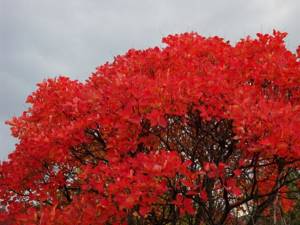
Representatives of this species tolerate frost somewhat worse. Even when creating a shelter, the bush can freeze to the snow cover. When planting varieties of mackerel belonging to this species, it is important to pay attention to its protection from the wind. The place should be sunny, the possibility of groundwater should be excluded.
Green Tanned Mackerel (Cotinus Сoggygria).
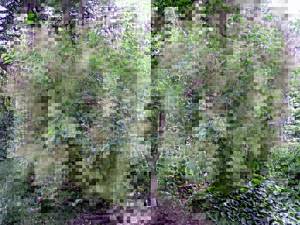
The species most adapted to harsh winters. It tolerates frosts down to -30 degrees, while an adult shrub does not require shelter. Young shrubs (up to three years old) should be hidden for the winter under a thick layer of peat or leaves. Like all types of this plant, leather mackerel needs protection from strong winds and stagnant waters. Shrubs of this species grow up to 5 meters and higher. The leaves are bright green, in some varieties they change color to all shades of orange and red by autumn.
Cotinus coggygria.
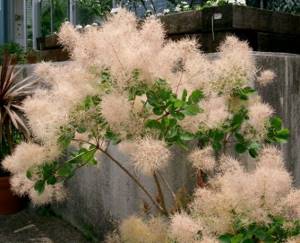
The most heat-loving variety of mackerel, does not tolerate even the slightest frost. In the conditions of the famous “Russian winter”, the shrub needs good shelter, but even this does not guarantee a good wintering of the plant. Every spring, it is recommended to trim the bush to the very base, leaving only a small stump, from which a new healthy bush will form over the summer. The leaves of this species have an unusual color - from bright yellow to intense light green.
It is quite difficult to take root in our latitudes, due to the same frosts. This species is the most capricious and heat-loving of all. Whatever conditions are created for the growth of shrubs of this species, with the arrival of winter they will inevitably die.
Royal Purple Mackerel (Cotinus coggygria Royal Purple).
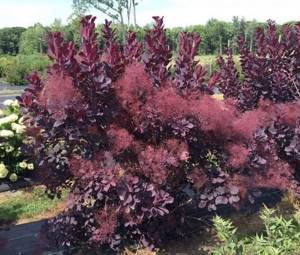
A low shrub, usually growing up to 3 meters. Its leaves are dark red, turning deep purple or blue in autumn. The flowers are small, dim red or pink. Flowering lasts from June until autumn. With the onset of fruiting, the stalks become noticeably longer and become covered with many small red “hairs”. Thanks to this, the bush takes on the appearance of a mysterious pink cloud.
Like all types of low-growing shrubs of this genus, it responds very well to pruning. Thanks to correct and timely pruning of branches, the crown of the bush becomes even thicker and branchier. It should be reshaped before the buds open, approximately once every two years. Too frequent and intense pruning can negatively affect flowering.
Mackerel Purpureus.
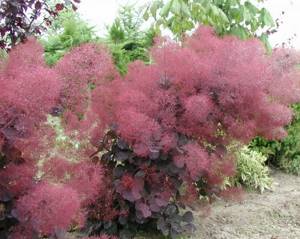
All spring it “burns” in the sun with bright purple-red leaves. With the onset of summer, the leaves change their color to rich green, thereby creating a contrasting background for the carmine red or pink cloud.
Skumpia Notcutt`s Variety.
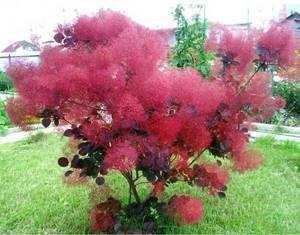
A low-growing variety, growing no more than one and a half meters in height. The leaves are painted in all shades of red, the inflorescences are purple-pink.
Flame skumpia.

Translated from English as “flame”. The variety received this name for its amazing foliage color. The bush seems to be blazing with all shades of fire - from bright yellow to blood red. One bush can have more than ten shades of red, orange and yellow.
Skumpia Grace.
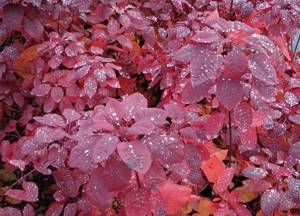
It differs only in its purple-red foliage, on which drops after rain look incredibly mysterious. This is one of the features of skumpia - when liquid gets on the leaf blade, it does not roll off it.
Tannery Young Lady (Cotinus coggygria Young Lady).

Perhaps the brightest and most unpretentious variety of this species. It belongs to low-growing shrubs, its average height is 2 meters, maximum is 4 meters. It is considered the most hardy and unpretentious variety. Not afraid of low temperatures, can withstand temperatures down to -29 degrees. That is why it is the most common type of mackerel among gardeners in mid-latitudes.
It grows quite quickly, adding an average of up to 50 cm per year. Lives about 60 years. Throughout the entire growing season, the foliage is green, the inflorescences are white-green, subsequently changing their color to yellowish, and closer to autumn to pink. The flowering of the bush begins in June and lasts until late autumn. The greatest decorativeness is revealed in August - September, when the bush looks like haze or fog.
Mackerel Young Lady can be cut right down to the stump, in which case the plant will actively grow and quickly form a spherical bush. It is best to choose a place in the garden that is well lit, but without direct sunlight. In the shade, the bush will not have enough time to become woody before winter and young shoots may freeze.
Mackerel Golden Spirit.
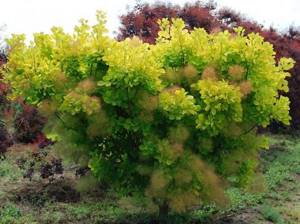
The most popular variety of this species, which has won universal love due to its unusual shape and color of leaves. The leaves of this plant resemble shining gold coins.
Useful properties of scumpia.
Mackerel leaves contain large amounts of tannin and flavonoids, which are actively used as medicinal raw materials in modern medicine. The highest concentration of essential oils occurs during the flowering and fruiting period of the mackerel. Today, the essential oils of this unusual shrub are widely used in perfumery, in the manufacture of shampoos, body care products, and also as a food flavoring.
Mackerel essential oil has antibacterial properties against a number of bacteria and is used as an anti-inflammatory, antiseptic, and antimicrobial agent. But this is not all the positive qualities of this oil. Mackerel essential oil is very successfully used as a wound healing agent, for various skin diseases, to reduce blood cholesterol levels, and so on.
Previously, mackerel was actively used in dyeing and leatherworking. The plant was used as a natural dye, which was used to dye the product in various tones of yellow, orange and brown. Mackerel wood is distinguished by its softness and at the same time strength. Thanks to these qualities, it is popular with carpenters, who make musical instruments, various crafts and many other original products from it.
Proper planting of a smoky tree: all the subtleties of growing a crop
Mackerel is considered by gardeners to be a non-capricious plant, but for its favorable development it is necessary to follow certain rules:
- To plant the plant, you should choose the brightest place protected from the wind. Near the place where the mackerel seedling is planted, there should not be any mature trees that can shade the young plant.
- The crop is very sensitive to waterlogging - high-lying groundwater can greatly harm the development of the root system of the mackerel. When planting, reliable drainage should be provided, and if its installation is impossible, a planting site should be chosen that is drier and protected from the influence of groundwater.
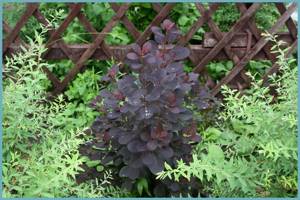
Provide good drainage for the scumpia
- The root system of the scumpia is branched and of considerable length, so the plant is absolutely undemanding to the composition of the soil. But young mackerel will grow faster on light soils with an alkaline reaction.
Advice! Avoid planting mackerel in areas with heavy acidic soils.
- In the first years of life, the young plant requires shelter in winter. Planting of skumpia in a permanent place can be carried out in spring and autumn, in the latter case, provided that winters are not severe and long.
- A tree is usually planted with ready-made seedlings, the price of which is quite high, so in order to prevent the premature death of the plant, you must follow all the rules for planting a crop.
Planting and caring for scumpia: when and how to plant a plant in the garden?
The tree can be planted in spring and autumn. Planting dates are determined as follows:
- if the seedling has an open root system, then it is planted in autumn or spring;
- if the root system is buried, then planting is allowed from the beginning of spring to the end of autumn;
- planting seeds is possible in autumn and spring;
- Autumn planting is possible only in mild winter conditions.
Autumn planting is carried out until mid-October so that the plant has time to take root before winter. In spring they are planted until mid-April, until the heat sets in.
Tip #2. A peculiarity of growing mackerel from seeds is that the seeds are necessarily subjected to stratification.
Before planting the seedlings, the roots are soaked in water for a day, then they are inspected for the presence of dry and damaged roots. If there are any, they must be removed and the sections treated with a fungicide.
They dig a small hole, a little larger than the roots themselves. Preliminary preparation of the planting pit is not necessary; fertilizers are not applied. The tree takes root faster in poor soil. Read also the article: → “Gazania flower - growing, planting and care”
Planting process:
- Pour 20 liters of water into the hole.
- Wait until the water is absorbed and add some soil to the bottom of the hole.
- Lower the roots of the seedling into the hole and smooth them out.
- Fill the hole and compact the soil on top.
- Water the seedling.
During planting, the root collar is left open 2 cm above the soil level. Seedlings are planted at a distance of at least 1.5 m from each other.
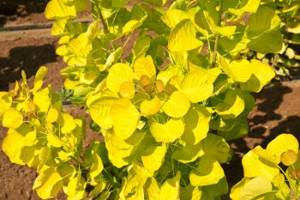
A tree grown in poor soil has richer autumn color
Sumac: proper care in the Moscow region
Caring for mackerel in the summer consists of gentle but regular watering, weeding and feeding with nutritional compounds. Treatment of the plant is necessary when diseases or pests that have attacked the tree are detected.

Young plant
In winter, the plant should be protected from frost. To do this, you can use shield structures that enclose the seedling, covering the trunk and fence with snow. Such shelters must be dismantled with the onset of warm weather, otherwise the tree may rot under the shelter.
Advice! If, when removing the winter shelter, damaged branches of the mackerel are found, they should be pruned and treated with garden varnish.
An overgrown tree can be subjected to sanitary pruning:
- pruning to a “stump” will rejuvenate the tree and increase the branching of the bush;
- With the help of regular pruning, the tree can be given a decorative shape.
Reproduction of the scumpia shrub
Shrubs can be propagated in different ways, one of them is layering. Bend the lower branch of the plant to the ground and secure with pins. To make the roots grow faster, the bark should be trimmed a little. As soon as the plant has settled into a new plot of land, the branch is cut off from the main bush. The main thing is to be careful.
The root propagation method is also possible. For this, green cuttings are used. After preparation, they are soaked for 12 hours in a heteroauxin solution.
After a while, the cuttings can be planted in a greenhouse. However, in order for them to germinate, they will require careful care. At first, the cuttings will need regular watering.
This plant can also be propagated by seeds. In August, when the bush begins to bear fruit, collect the seeds. Sowing is best done in spring or early summer.
Mackerel: feeding, timing of feeding, types of fertilizers used
Mackerel does not tolerate excess organic matter or complex mineral fertilizers. The plant, in principle, does not need fertilizing; it is enough to apply a complex of mineral fertilizers once a year (in spring), taking into account the size of the plant.

Fertilize once a year to keep the plant blooming well.
In some cases, if the plant develops poorly and produces insignificant growth, you can carry out foliar feeding with growth regulators, spraying the product over the green branches. This treatment should be carried out in the first half of summer, no later than August.
How to care for mackerel on the site?
Caring for the plant will not take much time. In May, while the leaves have not yet blossomed, dry and damaged branches are pruned every 2-3 years. If necessary, form the shape of a bush, no more than once a year. Old branches are cut out completely, and young ones are shortened by 2/3 of their length. The crown is formed more often in low bushes, less than 3 m.
Water mature bushes when the soil is dry. Pour up to 30 liters of water into the tree trunk circle. Young seedlings, until they take root and the root system grows, are watered 2-3 times a week.
To preserve moisture, the soil is mulched in April-May. Only young shrubs under 3 years of age are covered for the winter. First, mulch the soil in the tree trunk circle. Lay a layer of peat and humus, and then cover the mulch with non-woven material on top.
Most varieties are not afraid of either cold or disease. But still cases of damage to bushes exist. Mackerel pests:
- fawn leaf beetle;
- pistachio pine beetle;
- scumpium psyllid.
To control pests, use Karbofos or Decis.
Among the diseases of mackerel, verticillium wilt is distinguished. This is a fungal disease that leads to withering and death of shoots. It develops under unfavorable climatic conditions, high humidity and air temperatures above 17 degrees. The branches must be cut out and burned, and the bush itself is treated with a fungicide. Use 0.2% solutions of the drugs “Vitaros”, “Fundazol”, “Benlat”, “Topsin” or “Previkul”.
Mackerel propagation: methods and secrets
The following methods are used to propagate leather mackerel:
- Propagation by rooting layering - with this method, the bark on the lower branch is cut, and the branch is sprinkled with earth, pressing it with a hairpin. After some time, roots will form at the site of the cut.
- Propagation by cuttings - cuttings with several buds are taken from a healthy plant. Some foliage is removed. The cuttings are planted in a greenhouse in light soil. During the summer, the young plant forms roots and can be used for planting.

Mackerel cuttings - Seed propagation is a very difficult and troublesome method; it is rarely used, usually during breeding work. Plants grown from seeds do not retain hereditary characteristics well.
Advice! When taking cuttings, it is necessary to take cuttings from green branches. To speed up rooting, you can treat the cuttings with heteroauxin, epin, and root.
Planting a plant
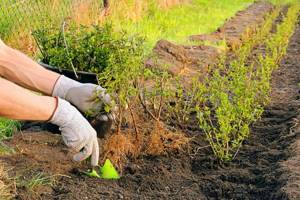
Skumpia loves moist soil, but does not tolerate stagnant water. Through the shallow root system, plants are sensitive to soil compaction. It should be light and water-permeable. It is best to plant in a well-lit, sun-warmed, windless place. It is important to prevent drafts. When planting, you need to dig a hole 3-4 cm higher than the length of the root system of the seedling itself.
Reproduction:
- Saplings. Seedlings are planted from early spring to late autumn. You need to calculate the exact time of planting in such a way that the root gets used to the soil, the onset of heat (if planted in spring) or frost (if planted in autumn).
- Seeds. You can also sow seeds to a depth of 2 cm. Spring sowing requires preliminary preparation of seeds: scarification procedures (violation of the integrity of the seed cover) and stratification (freezing, which lasts six months, so that the seeds germinate well). You can grow seedlings and plant them in open ground. You don’t need to do anything special for autumn sowing.
- Layerings. In this case, you need to press the branch to the ground at an angle, but first you need to cut off the bark; when the root appears, you can cut it off from the main bush. You need to remember about the plant’s addiction to water and water the bush often. Excessive moisture can lead to the death of the cuttings. This plant has no pests or diseases as such.
Diseases and pests of mackerel in the Moscow region
Mackerel has a remarkable feature - it is practically not damaged by pests and known diseases. Sometimes in winter, scumpia trees that overwinter without shelter can be damaged by hares or mice by gnawing on the bark.
Otherwise, this is a very stable crop, growing well in central Russia, decorating city parks and private gardens with its decorative appearance.
Skumpia in autumn: video
Growing scumpia: photo
Mackerel leather
The most famous or common mackerel (Cotinus coggygria), which is grown as an ornamental garden plant. In addition, it is used to produce yellow paint, which is why it is also called yellow paint. For the light clouds of inflorescences, the plant is also called the smoky or wig tree.
Skumpia is a bush or low tree - no more than 5 m in height, its lush crown has a round shape and can be up to 3 m in diameter. It is formed by numerous bare and shiny branches, which acquire a reddish tint from the sunny side.
Clouds of scumpia
The leaves of the tree are simple, elliptical in shape, measuring 10x7 cm, the leaf blade is smooth on top, slightly pubescent below. Light green in summer, in autumn the foliage acquires a very bright color - yellow-orange, scarlet-scarlet. The roots of the scumpia are highly branched and located superficially.
Mackerel foliage in autumn
But mackerel is especially transformed during the flowering and fruiting period. The flowers themselves are small and inconspicuous, cream-colored, collected in loose paniculate inflorescences, bloom in May. The inflorescence contains both male and female flowers, as well as many sterile flowers. It is they who make the tree especially decorative.
After flowering ends, their pedicels lengthen, long reddish or light yellow hairs grow on them, and the inflorescences become airy, resembling fluffy clouds. Drupes usually ripen in August. Mackerels growing in the south can bloom several times during the summer season.
Mackerel inflorescences
Skumpia prefers sunny places. In nature, it tolerates a lack of moisture well and grows on dry, calcareous soils. Does not tolerate heavy, heavily moist soils. It can rise to a height of up to 1200 m above sea level. In places with harsh winters, the mackerel freezes slightly, its young growths are especially affected, but recovery occurs easily, and the bush again takes on its beautiful shape.
Popular varieties
Breeders have developed varieties of mackerel with brightly colored leaves. But they are not as winter-hardy as the natural species and can only grow in the southern regions. The 'Purpureus' form is quite stable with beautiful purple foliage.
Mackerel with purple foliage
The following varieties are popular among gardeners:
- 'Royal Purple'
The most common variety of scumpia. It grows slowly, reaches no more than 1.5-3 m in height and diameter, and takes on a rounded shape. The leaves of this variety immediately after blooming have a dark red, almost black color; in summer they acquire a metallic tint and a slightly less saturated color. In autumn, the plant shows itself in all its glory, dressing in an orange-red outfit. The flowers are red with a silvery tint.
- 'Rubrifolius'
This variety usually grows up to 2 m, in the southern regions it reaches 3-5. The leaves are an unusually beautiful rich purple-plum color; in autumn their color acquires red shades.
Mackerel with purple leaves. Photo from 1decor.org
- ‘Grace'
Taller and taller trees - up to 3-5 m tall. The plant is very decorated with large oval leaves, the color of which is red-purple in summer, becoming scarlet in autumn. But the main decoration is the purple-pink flowers, forming airy conical panicles.
- 'Golden Spirit'
The average height of the plant is 1.5-3 m. Its foliage is very decorative at the beginning of its dissolution - with an orange tint along the edges of the leaves and in the center along the veins. In autumn, the tree becomes even more beautiful: it gradually changes the color of its leaves from light green and orange to deep red, almost purple. It is also decorated with clouds of light yellow paniculate inflorescences.
Mackerel 'Golden Spirit'. Photo from greenmart.com.ua
- 'Velvet Cloak'
Shrub no more than 2 m tall. The red-violet leaves retain this color until autumn, when their color changes to red. The airy inflorescences have a pink tint.
- ‘Young Lady'
This is a dwarf form that grows slowly. In 5-10 years the shrub reaches 1-1.5 m in height. Forms a neat and compact bush. A frost-resistant variety, characterized by very early and abundant flowering, forms lush pink inflorescences. The leaves are green in summer with a slight blue tint; in autumn they are painted in the full range of yellow, orange, and red.
Mackerel 'Young Lady'. Photo from greengarden31.ru
Useful properties of scumpia
Mackerel leaves and flowers, when used correctly, help in the treatment of chronic diseases and strengthen the body. In particular:
- fight inflammation and eliminate bacterial processes;
- have a diuretic effect and help with swelling;
- remove waste and toxic substances from the body;
- cleanse the liver and kidneys, wash out small stones from the urinary tract;
- improve the flow of bile;
- have a beneficial effect on the condition of blood vessels and serve as the prevention of atherosclerosis;
- have a wound-healing effect and help with cuts and burns;
- relieve inflammation in the oral cavity due to dental diseases.
Mackerel can be used as a safe natural pain reliever. Due to the high concentration of tannins, the leaves of the plant have strengthening properties and help with diarrhea.
Methods of preparation and use
Aqueous decoctions and infusions, as well as products for external use, are prepared based on the flowers and leaves of medicinal mackerel. In all forms, the plant has a good healing effect, but requires safe dosages.
Infusion
An infusion of medicinal scumpia is prepared for ulcers, gastritis and after severe poisoning. The recipe looks like this:
- dry leaves of the plant are crushed in the volume of a small spoon;
- pour 250 ml of boiling water into a glass container;
- leave under the lid to infuse for an hour;
- filter.
You need to take 20 ml of the remedy three times a day on an empty stomach.

Mackerel infusion removes alkaloids and heavy metals from the body and protects the liver
Decoction
For diseases of the mouth and throat, an infusion of mackerel leaves has a good effect. They do it like this:
- 10 g of dry raw mackerel is crushed and poured into 1 liter of water;
- place the pan on low heat and heat for ten minutes under the lid;
- The finished product is removed from the stove and filtered.
We recommend reading: Patchouli essential oil: properties, use for facial skin and hair, reviews
For rinsing with sore throat and laryngitis, the drug is used up to five times a day in a warm form.
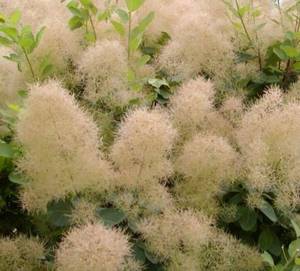
Mackerel decoction can be used for lotions and compresses for boils
Ointment
For poorly healing wounds, skin inflammations and ulcers, you can prepare an ointment based on fresh mackerel leaves. The algorithm looks like this:
- several leaf plates of scumpia are ground manually or using a blender until smooth;
- mixed in equal proportions with melted pork fat;
- bring to complete homogeneity and put in the refrigerator for three days.
Frozen mackerel ointment is used to treat skin lesions and irritations, as well as burns in the healing stage. To ensure maximum benefit from the product, it is recommended to cover it with a bandage after application.

Instead of lard, you can use melted butter or Vaseline to create an ointment.

